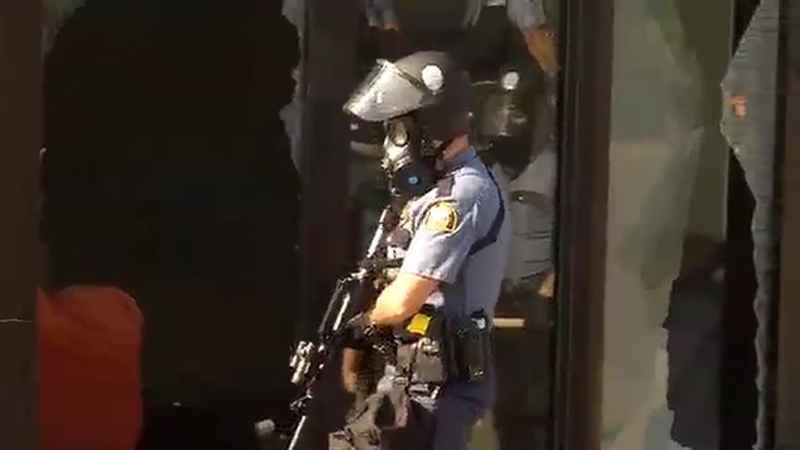Communication breakdown during past unrest prompts changes in St. Paul
Even before protests over the police killing of Daunte Wright gave way to unrest in Brooklyn Center, leaders in a city on the other side of the metro launched a response plan that had been nearly a year in the making.
Jane Prince, a council member representing St. Paul’s east side, says her city learned important lessons after what she described as a communication breakdown in the days immediately after the death of George Floyd in Minneapolis.
“Our constituents want to hear directly from us. They want to know that we know what’s going on,” Prince said.
However, internal emails obtained by 5 INVESTIGATES from the city of St. Paul reveal some leaders such as Prince said they felt “left out of the loop” as looting and rioting stretched beyond Minneapolis.
Desperate for information on the afternoon of May 28 last year, Prince emailed city staff.

[KSTP]
“I am getting riddled with calls and texts about what is going on in the city right now. Rumors abound,” Prince wrote.
But she says reliable intelligence in real-time was not available and later wrote to Mayor Melvin Carter’s political director, “this needs to get fixed.”
“I give all my constituents my cell phone number and so then to be called or texted to be asked what’s going on and not be able to say that I’m in the loop?" Prince asked. "It’s more than embarrassing. It’s not appropriate."
In an interview with 5 INVESTIGATES earlier this month, Carter said initial frustration over communication did not come as a surprise.
“I know there were a couple of moments where all of us were trying to figure out what’s going on, what do we expect to happen next,” Carter said.
The same internal emails show the mayor experienced some frustration of his own. On May 30 last year, emails show St. Paul Police Chief Todd Axtell informed him the National Guard members they requested were still not in place.
“This is beyond disappointing and frustrating,” Carter wrote in response.
Last month, 5 INVESTIGATES obtained a report from the Minnesota National Guard that also highlighted challenges in communicating with local cities and police departments.
“I think I learned a lot in that process,” Carter said in an interview earlier this month. “The same as we had a chance to share with our council members what it takes to stand up our emergency operations center, I think I learned a lot in that process about what it takes to mobilize our National Guard.”
Prince agreed that lessons learned from a year ago have helped the city prepare for potential civil unrest after a verdict in the trial of former Minneapolis police officer Derek Chauvin and the current unrest in Brooklyn Center.
Council members now receive near-daily situation reports on protests and other events in St. Paul. One of those reports this week detailed preparations for a demonstration in response to the police killing of Daunte Wright.
The city also created a web page dedicated to preparations surrounding the Chauvin trial and police gave briefings to area business owners during a series of online workshops in March.
Before the latest police killing in Brooklyn Center, Carter expressed confidence that his city would be better able to respond when put to the test.
“To the extent that we know what we’re ready for, it does feel like a plan and a set of preparations are in place that will help us through this next few weeks,” he said.
When Prince was asked to compare the city’s current level of communication compared to a year ago:
“It’s like night and day.”